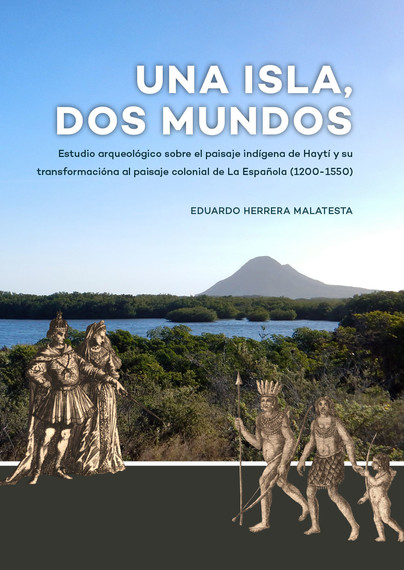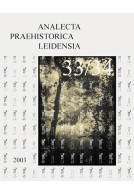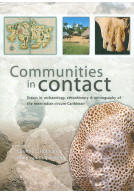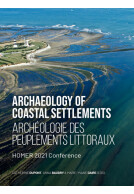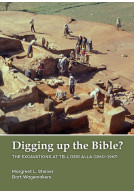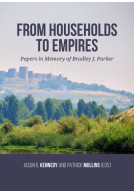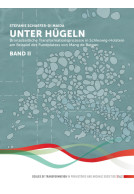Una Isla, Dos Mundos (Hardback)
Estudio arqueológico sobre el paisaje indígena de Haytí y su transformacióna al paisaje colonial de La Española (1200-1550)
Imprint: Sidestone Press
Pages: 336
Illustrations: 43fc / 85 bw
ISBN: 9789088905728
Published: 30th June 2018
Script Academic & Professional
Pages: 336
Illustrations: 43fc / 85 bw
ISBN: 9789088905728
Published: 30th June 2018
Script Academic & Professional
You'll be £150.00 closer to your next £10.00 credit when you purchase Una Isla, Dos Mundos. What's this?
+£4.99 UK Delivery or free UK delivery if order is over £40
(click here for international delivery rates)
Need a currency converter? Check XE.com for live rates
(click here for international delivery rates)
Need a currency converter? Check XE.com for live rates
Para las poblaciones indígenas la llegada de Colon al Caribe en 1492 significó una transformación y reestructuración de su mundo, incluyendo cambios a niveles culturales, sociales, económicos y políticos. En este trabajo se proponen modelos interpretativos sobre la transformación del paisaje indígena al colonial, a través de la aplicación de una investigación arqueológica regional que integró los conceptos de taskscape y paisajes en conflicto con análisis estadísticos y de Sistemas de Información Geográfica para evaluar patrones de distribución de cultura material. Como resultado se pudieron identificar y definir taskscapes indígenas a distintas escalas espaciales, que permitieron el delineamiento del paisaje antes de la llegada de Colón. Este resultado fue comparado con evidencias del movimiento español en el norte de la isla, obtenido de fuentes documentales y cartográficas coloniales tempranas, lo que permitió observar las bases espaciales y materiales de la transformación del paisaje indígena al colonial.
Este trabajo permitió conocer que en la región Norte de la isla se puede identificar la transformación del paisaje indígena en dos niveles. El primero, denominado Nivel Cotidiano, fue observado a través de los taskscapes en conflicto, los cuales muestran las transformaciones en las tareas diarias llevadas a cabo tradicionalmente por los grupos indígenas, y su disrupción con aquellas tareas impuestas en el nuevo régimen colonial. El segundo, llamado Nivel del Imaginario, se divide en dos transformaciones: la primera se identificó en la percepción que los primeros españoles tuvieron de los grupos indígenas; y la segunda, se observó en el cambio final del mundo indígena al mundo colonial, donde tanto las prácticas como las identidades previas fueron integradas y parcialmente desaparecidas dentro de la idea del “Nuevo Mundo”.
De acuerdo a las opiniones de historiadores y especialistas, a lo largo de este libro se utiliza el topónimo Haytí para referirse al nombre que los indígenas le dieron a la isla, y La Española para referirse al topónimo dado por los españoles (ver capítulo 1).
English abstract
The arrival of Columbus to the Caribbean in 1492 marked a milestone in world history. In both the European and the indigenous world, a set of economic, political and hierarchical networks and relations were defined, structured and changed. These changes affected the indigenous population at different cultural, social and political levels.
One way to approach the transformations that occurred in the indigenous world is by studying material culture patterns and their spatial distribution. In this work a regional archaeological investigation was combined with a theoretical framework that integrated: the concepts of taskscape and contested landscapes with statistical analysis and Geographic Information Systems, to evaluate the patterns of material culture distribution and its cultural implications.
The research project was carried out on the coast of the current Montecristi province, in northwest Dominican Republic. The theories and methods were applied to different archaeological spatial patterns as well as a set of environmental characteristics. This allowed indigenous taskscapes to be defined at different spatial scales, which in turn permitted the delineation of the indigenous landscape before the arrival of Columbus.
The archaeological results were compared with evidence from the early colonial chronicles and cartography for the north of the island. This comparison highlighted the spatial and material bases for the transformation of the indigenous landscape.
The final results were encapsulated by two transformations of the indigenous landscape. The first, called the Everyday Level, was observed through contested taskscapes, which reveal how traditional daily tasks undertaken by indigenous groups were transformed and disrupted by the new colonial regime. The second, called the Imaginary Level, is built on two additional transformations. The first was identified based on how the first Spaniards perceived indigenous groups. The second was revealed in the final change of the indigenous world to the colonial world, where both practices and previous identities were integrated and partially disappeared within the idea of the “New World.”
Other titles in Sidestone Press...







